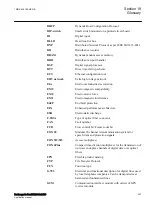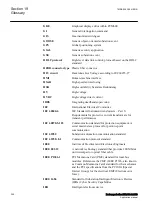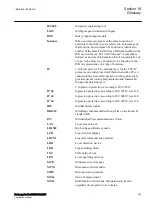
1.0 2017-01, Instrument transformers – Guidance for application of current
transformers in power system protection, is the first official document that
highlighted this development. So far remanence factors of maximum 80% have
been considered when CT requirements have been decided for ABB IEDs. Even in
the future this level of remanent flux probably will be the maximum level that will
be considered when decided the CT requirements. If higher remanence levels
should be considered, it should often lead to unrealistic CT sizes.
Thus, now there is a need to limit the acceptable level of remanent flux. To be able
to guarantee the performance of protection IEDs, we need to introduce the
following classification of CTs.
There are many different standards and a lot of classes but fundamentally there are
four different types of CTs:
•
Very High Remanence type CT
•
High Remanence type CT
•
Low Remanence type CT
•
Non Remanence type CT
The Very High Remanence (VHR) type
is a CT with closed iron core (for
example. protection classes TPX, P, PX according to IEC, class C, K according to
ANSI/IEEE) and with an iron core material (new material, typically new alloy
based magnetic materials) that gives a remanent flux higher than 80 % of the
saturation flux.
The High Remanence (HR) type
is a CT with closed iron core (for example,
protection classes TPX, P, PX according to IEC, class C, K according to ANSI/
IEEE) but with an iron core material (traditional material) that gives a remanent
flux that is limited to maximum 80 % of the saturation flux.
The Low Remanence (LR) type
is a CT with small airgaps in the iron core (for
example, TPY, PR, PXR according to IEC) and the remanent flux limit is specified
to be maximum 10% of the saturation flux.
The Non Remanence (NR) type
is a CT with big airgaps in the core (for example,
TPZ according to IEC) and the remanent flux can be neglected.
It is also possible that different CT classes of HR and LR type may be mixed.
CT type VHR (using new material) should not be used for protection CT cores.
This means that it is important to specify that the remanence factor must not exceed
80 % when ordering for example, class P, PX or TPX CTs. If CT manufacturers are
using new core material and are not able to fulfill this requirement, the CTs shall be
specified with small airgaps and therefore will be CTs of LR type (for example,
class PR, TPY or PXR). Very high remanence level in a protection core CT can
cause the following problems for protection IEDs:
Section 18
1MRK 505 388-UEN B
Requirements
294
Busbar protection REB650 2.2 IEC
Application manual
Summary of Contents for REB650
Page 1: ...RELION 650 SERIES Busbar protection REB650 Version 2 2 Application manual...
Page 2: ......
Page 18: ...12...
Page 28: ...22...
Page 38: ...32...
Page 78: ...72...
Page 96: ...90...
Page 136: ...130...
Page 150: ...144...
Page 156: ...150...
Page 232: ...226...
Page 278: ...272...
Page 298: ...292...
Page 310: ...304...
Page 320: ...314...
Page 321: ...315...
















































